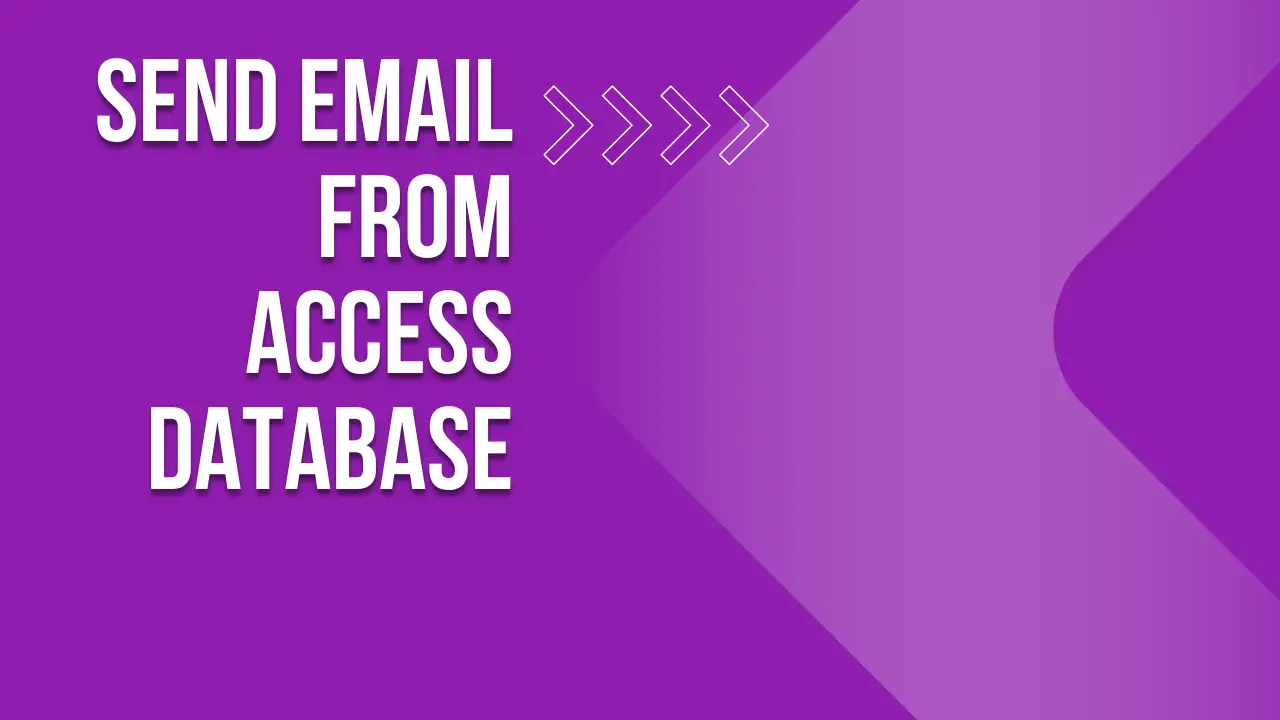Using the SendObject Method
The simplest way to send an email from Access is by Email leads that convert. Visit website: phone number list and boost your ROI. using the built-in DoCmd.SendObject method. This method allows you to send an email with an object (like a report, query, or form) as an attachment. It's a great option for quick, one-off emails where you don't need a lot of customization. The basic syntax is DoCmd.SendObject acReport, "YourReportName","Subject", "Body of the email", False, "". The acReport argument specifies that you're sending a report, and "YourReportName" is the name of the report you want to attach. The acFormatPDF argument formats the report as a PDF, which is a good practice for ensuring the recipient can open it. This method, however, opens the user's default email client, like Outlook, with the email pre-populated. The user then has to manually click "send." This is a key limitation if you need to send emails in the background without user interaction.

Utilizing Outlook Automation
For more advanced email functionality, you can use Outlook Automation with VBA. This method gives you complete control over the email's content and appearance and allows you to send emails without user intervention. To use this, you need to create an instance of the Outlook Application object. The code typically starts with Dim olApp As Outlook.Application, followed by Set olApp = CreateObject("Outlook.Application"). You can then create a new mail item using Dim olMail As Outlook.MailItem and Set olMail = olApp.CreateItem(olMailItem). From there, you can set properties like .To, .Subject, and .Body. You can also attach files, add CC and BCC recipients, and even use HTML for the email body. The final step is to use olMail.Send to send the email directly, or olMail.Display if you want to let the user review it before sending. This method is incredibly powerful, but it requires that Outlook is installed and configured on the user's machine.
Integrating with SMTP Servers
If you're in a situation where Outlook isn't available or you need to send emails from a server environment, you can use SMTP (Simple Mail Transfer Protocol). This method involves directly connecting to an email server to send your messages. It's a more technical approach but offers the most flexibility and independence from a local email client. To do this, you would use a third-party library or a custom VBA class module that handles the SMTP communication. There are several pre-built VBA classes available online that you can import into your database. These classes handle the nitty-gritty details of connecting to the SMTP server, authenticating with a username and password, and sending the email. This is the ideal method for creating a robust, server-based email solution that can be triggered automatically.
The Importance of Error Handling
Regardless of the method you choose, proper error handling is crucial. Things can go wrong when sending emails—the server might be down, the recipient's address might be invalid, or the database might not have the necessary permissions. You should always include On Error GoTo statements in your VBA code to gracefully handle these situations. For example, if you're using Outlook Automation and Outlook isn't installed, your code will fail. A good error handling routine can catch this error, display a user-friendly message, and prevent your database from crashing. Similarly, if you're using an SMTP connection, you need to handle potential connection errors and authentication failures.
Creating a User-Friendly Interface
Finally, a well-designed user interface (UI) can make sending emails from your database a seamless experience. You shouldn't force users to open the VBA editor to send an email. Instead, create a form with buttons that trigger your VBA code. For example, you could have a form that displays a list of orders, with a button next to each one that says "Send Invoice." When the user clicks this button, the VBA code runs in the background, attaches the relevant report, and sends the email. You can also include fields on the form for the user to customize the subject and body of the email before it's sent. A good UI ensures that the functionality is accessible and easy for even non-technical users to utilize.
Conclusion
Sending emails from an Access database is a great way to automate tasks and improve efficiency. Whether you're using the simple SendObject method for quick tasks, leveraging Outlook Automation for more control, or connecting directly to an SMTP server for a robust solution, the key is to use VBA to tie everything together. By combining these methods with proper error handling and a user-friendly interface, you can create a powerful tool that extends the capabilities of your database and streamlines your workflow. Remember to always consider your specific needs and the environment in which your database will be used when choosing the right method.